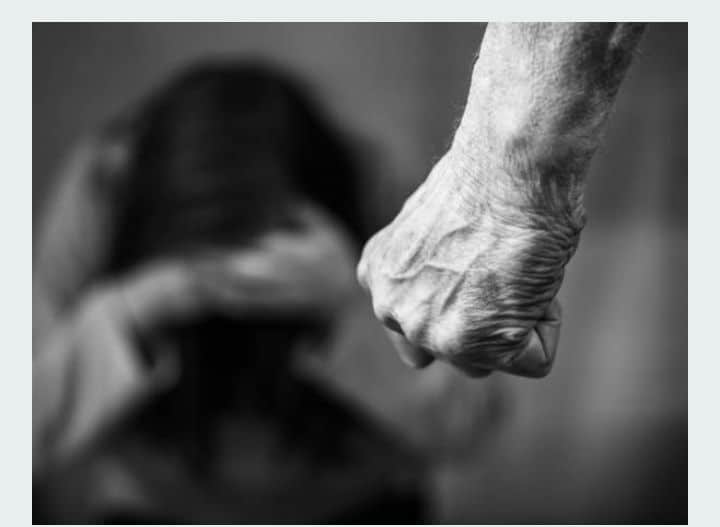Gender-based violence (GBV) refers to harmful acts directed at an individual based on their gender. It stems from unequal power relations between genders, often targeting women and girls but also impacting men, boys, and gender-diverse individuals. The most common forms of GBV include physical, sexual, psychological, and economic violence. This form of violence manifests in various settings, including homes, schools, workplaces, and public spaces, across different societies and cultures. GBV is a violation of fundamental human rights and remains a critical barrier to achieving gender equality globally.

Forms of Gender-Based Violence.
1. Physical Violence: Physical abuse is one of the most visible and recognizable forms of GBV. This includes acts like hitting, slapping, beating, or using weapons to inflict harm. Domestic violence is a significant manifestation of physical GBV, where intimate partners or family members perpetrate violence within the household. In many societies, cultural norms or social tolerance towards violence perpetuate the abuse, making it difficult for victims to seek help.
2. Sexual Violence : Sexual violence encompasses rape, sexual assault, and harassment. Women and girls are particularly vulnerable to sexual violence, often committed by individuals in positions of power, including family members, employers, or strangers. The issue of marital rape is prevalent but underreported, largely due to legal and cultural obstacles in recognizing it as a crime. The threat or act of sexual violence not only causes immediate physical harm but also results in long-term psychological trauma for survivors.
3. Psychological Violence : This form of violence includes emotional and verbal abuse, coercion, threats, and controlling behaviors. Psychological abuse is often more subtle but equally damaging as physical violence, as it undermines the victim’s sense of self-worth and autonomy. Victims may face isolation from family or friends, constant criticism, and threats of further violence, which can lead to severe mental health consequences, including depression, anxiety, and post-traumatic stress disorder (PTSD).
4. Economic Violence : Economic abuse involves controlling a person’s access to financial resources, limiting their ability to support themselves or forcing them into dependency. This can include withholding money, denying access to education or employment, or sabotaging economic opportunities. Economic violence is often used as a tool of control in abusive relationships and further entrenches the victim in a cycle of dependency

Causes of Gender-Based Violence.
The root causes of GBV are deeply embedded in societal norms and gender inequality. Patriarchal systems, which prioritize male dominance and authority, contribute significantly to the persistence of GBV. In many societies, traditional gender roles dictate that men hold power and authority, while women are expected to be submissive and dependent. This imbalance creates a power dynamic that can lead to abuse, as perpetrators use violence to assert control.Cultural and social norms also play a role in justifying or perpetuating GBV. In some cases, violence against women is normalized, and victims may be blamed for their abuse. For example, the stigma around rape often discourages victims from coming forward, while societal beliefs about gender roles might downplay or excuse domestic violence.Poverty, lack of education, and economic dependence also contribute to GBV.
Women in economically disadvantaged situations are often more vulnerable to abuse because they have fewer resources and opportunities to escape or seek support. Similarly, conflict and displacement can exacerbate gender-based violence, with women and girls facing increased risks of sexual violence in war-torn regions.
Impact of Gender-Based Violence.
The consequences of GBV are far-reaching, affecting individuals, families, and societies. For victims, the physical and emotional toll can be devastating. Many survivors experience long-term health issues, including injuries, sexually transmitted infections, and mental health conditions like depression and PTSD. The trauma can affect their ability to work, maintain relationships, or live fulfilling lives.Children who witness or experience violence are also significantly impacted.
Exposure to GBV can result in developmental challenges, emotional and behavioral problems, and a perpetuation of the cycle of violence, as children who grow up in abusive environments are more likely to become abusers or victims in adulthood.At the societal level, GBV undermines social and economic development. It limits the potential of women and girls, who make up half of the population, by restricting their access to education, employment, and participation in public life. In some countries, the economic cost of GBV, including healthcare, legal, and social services, is significant, draining resources that could be better used to promote development and well-being.
Addressing Gender-Based Violence
Addressing GBV requires a multifaceted approach that includes legal, social, and cultural interventions. Legal frameworks must be strengthened to protect victims and hold perpetrators accountable. Laws criminalizing domestic violence, sexual harassment, and marital rape are essential, but they must also be enforced effectively.Education and awareness campaigns play a crucial role in changing cultural attitudes toward gender and violence.
Public awareness initiatives can challenge harmful gender norms, promote respectful relationships, and encourage bystander intervention. Schools, communities, and workplaces should also be equipped to recognize and respond to GBV, providing safe spaces for victims to report abuse.
Support services for survivors are critical in helping them recover and rebuild their lives. Shelters, counseling services, legal aid, and financial assistance can provide victims with the necessary resources to escape violent situations and regain their independence.Finally, economic empowerment is a key tool in reducing GBV. When women have access to education, employment, and financial resources, they are better positioned to leave abusive relationships and make autonomous decisions about their lives.

Conclusion.
Gender-based violence is a pervasive issue that affects individuals, families, and communities across the globe. It is rooted in gender inequality and perpetuated by cultural, social, and economic factors. Addressing GBV requires a concerted effort from governments, civil society, and individuals to challenge harmful norms, strengthen legal protections, and provide support for survivors. Only by addressing the root causes and impacts of GBV can societies move toward greater gender equality and justice for all.




